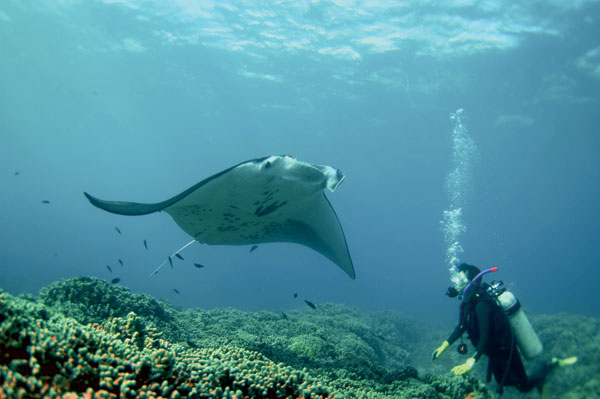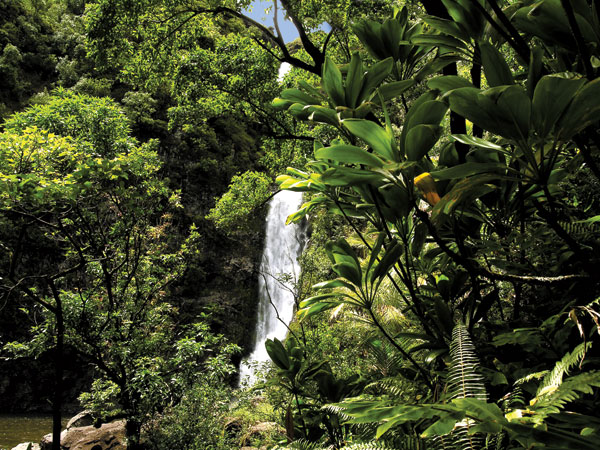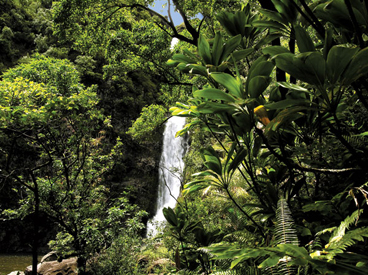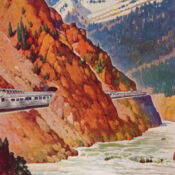A white obelisk marks where Cook fell. Technically, that six or ten square feet is part of England, and if you want to actually get to it, you can either hike for a really long time or get on a boat. So maybe it’s better with just the view from across the bay. A man who saw everything saw this last. And you have to think it was OK.

Which makes me wonder: If you’ve seen this, what else could you want to see? I get my answer the next night, when we drop anchor near the Big Island’s airport, bobbing in gentle waves. We squirm into wetsuits, ease into the water. Below us, lured by plankton drawn by spotlights, manta rays turn barrel rolls, feeding, spreading their huge wings, their mouths gaping in the world’s friendliest horror movie. I don’t have a better way to describe it. By all rights, the nightmarish, alien-like mouths—with 300 rows of teeth for filtering the tiny plankton—should be terrifying, but the creatures themselves are so slow and gentle, they seem like guardian angels of beauty.
They are the largest winged creatures on earth; they can be 30 feet across and weigh more than 3,000 pounds, although these are perhaps half that size. The rays come up from the deeps, maybe a dozen of them, sometimes swimming straight for each other and then rolling apart in unison, perfectly synchronized swimmers. More than once, a manta brushes my hand. The touch is a caress, the skin soft as velvet.
We float, they swim. Our worlds run parallel, brushing up against each other.
Which is, really, the way Hawaii itself can feel all too often. As if there were parallel worlds running, the one the tourists see and the one the Hawaiians live in. I’ve been here enough times, know enough people, that sometimes I can’t tell which world I’m in. I know the fact that I grew up on islands has made it easier for me to make friends in Hawaii. The Japanese have a great word, shimaguni konjo, which means “island nation consciousness.” And the simple facts are that island manners are different, island ways are different, and mainlanders are just never quite going to get it. Which doesn’t make visiting any less enjoyable, it just changes the lens you’re looking through.

So even though I’ve never been to Molokai before, when I get there, it makes perfect sense, like a three-dimensional image coming into focus when you hold the viewer just right.
Molokai radiates power, manna. Not a whole lot of people live here, not a lot of economy, so you would have to make up your own reason to stay. But the guys I talk to never want to be anywhere else because they can’t imagine being apart from this land. It’s as much who they are as the breath in their lungs.
The island’s sole town is a crossroad, two grocery stores, a surprisingly good bookstore, and a sacred stone where we stop while a traditional healer prays for us.
Molokai has gotten a lot of prayers over the years because of the thing it’s famous for: the leper colony. The first known case of Hansen’s disease in Hawaii was recorded in 1848. By 1866, they’d decided the solution was to simply chuck people suffering from the illness off a boat near the Kalaupapa Peninsula and leave them to fend for themselves, assuming they made it ashore.
But a priest, Father Damien, wasn’t exactly thrilled with that, so he hiked down to the peninsula and began to build. A church, of course, but also housing, a school, a hospital. Mostly what he did was remind the people that they were people, not a disease. And this alone is justification for his sainthood, conferred by Benedict XVI in 2009.
Back in Waikiki, right on the main drag among all the tourist tat, is the very tiny St. Augustine’s by the Sea chapel, which holds a Father Damien museum—which I know, as I stand looking at the steep trail down to Kalaupapa and considering my dead pacemaker battery, is as close as I’ll ever get to actually getting to see the colony. I’d stand as much chance making it back up that trail as I would getting chucked off the boat and trying to swim in.
But that’s OK, and that’s honestly one of the reasons I love Hawaii. A constant reminder that you’re never going to see everything, but what you do see will be beautiful and unforgettable and unexpected. And so, while everybody else goes down to the colony, I hang out at a farm with a kupuna, an elder who shows me how to turn taro—kind of like a turnip that grows in a rice paddy—into poi, the quintessential Hawaiian food. Poi gets a bad rep from outsiders; they say it tastes like paste or like nothing at all. But it’s actually quite lovely, delicate and sweet, like the island itself. I know I’ll be back for more.
Become a Saturday Evening Post member and enjoy unlimited access. Subscribe now




Comments
What a wonderful article for the mind to travel through. I have never known so much diversity existed in the Hawaiian Islands. This is an ideal travel story to read at bedtime peaceful; and relaxing. Thank you.
Mahalo for the wonderful article about Hawaii. It made me feel as if I were there standing next to you. Jerry, Gambrills Maryland